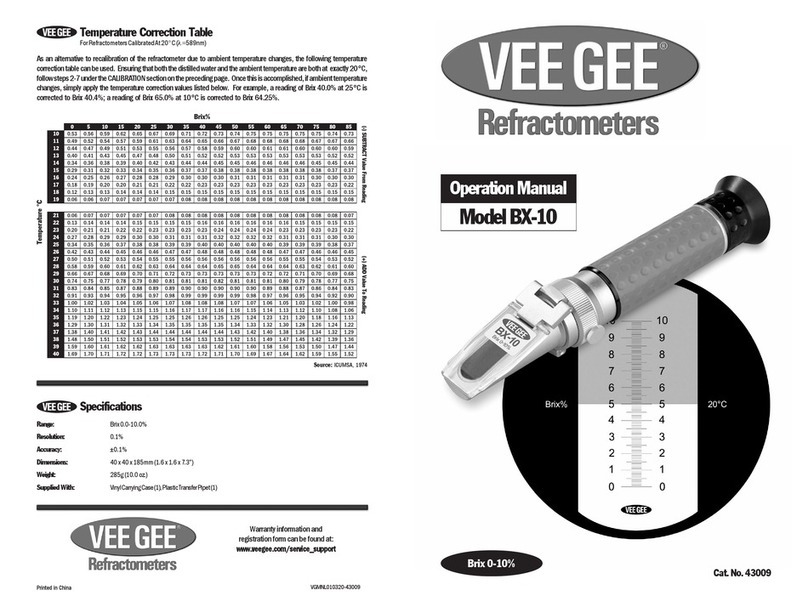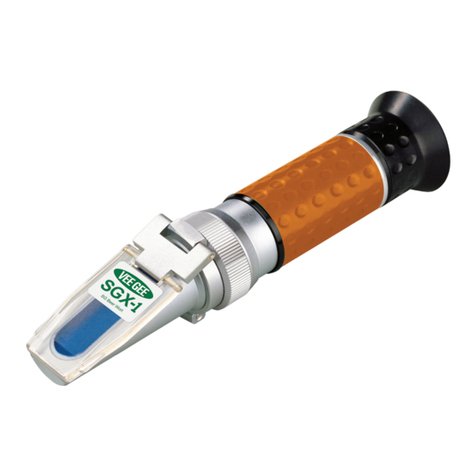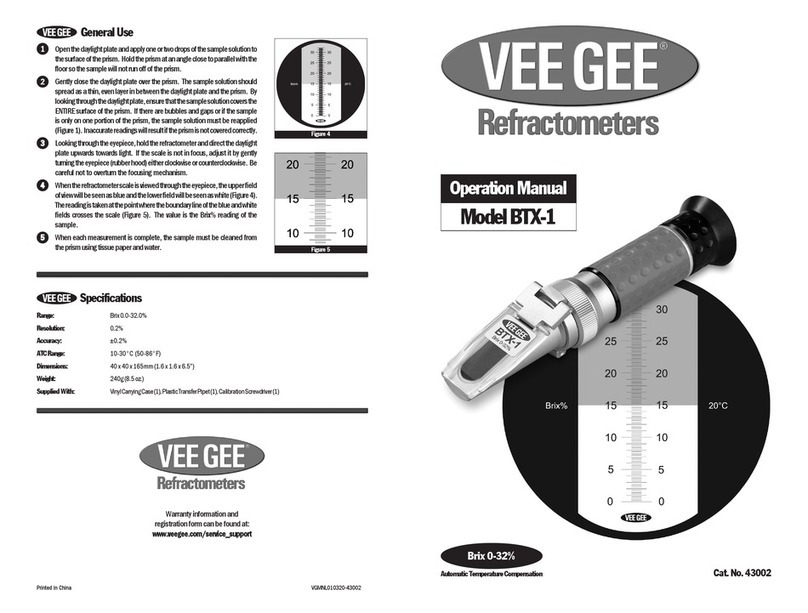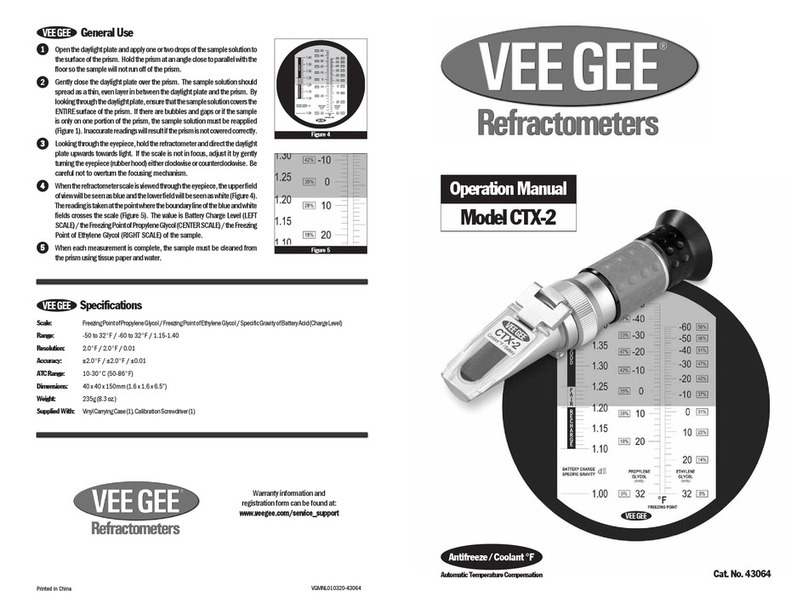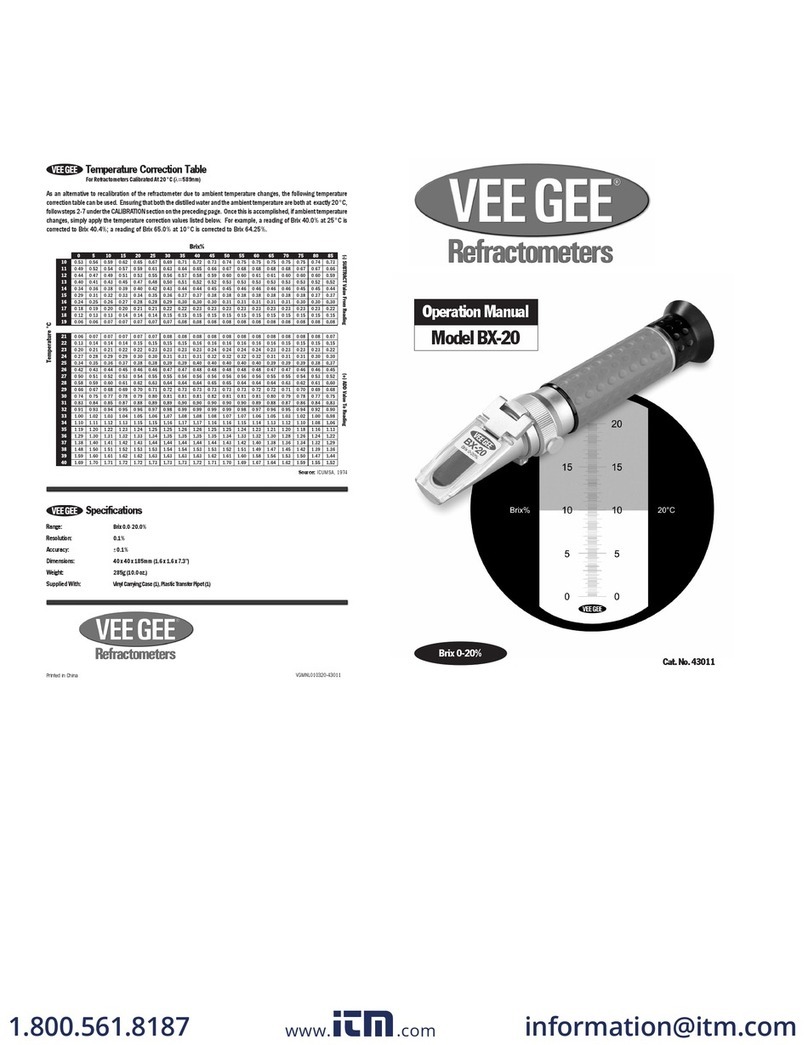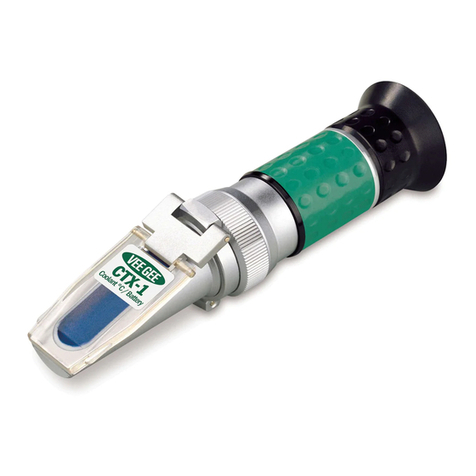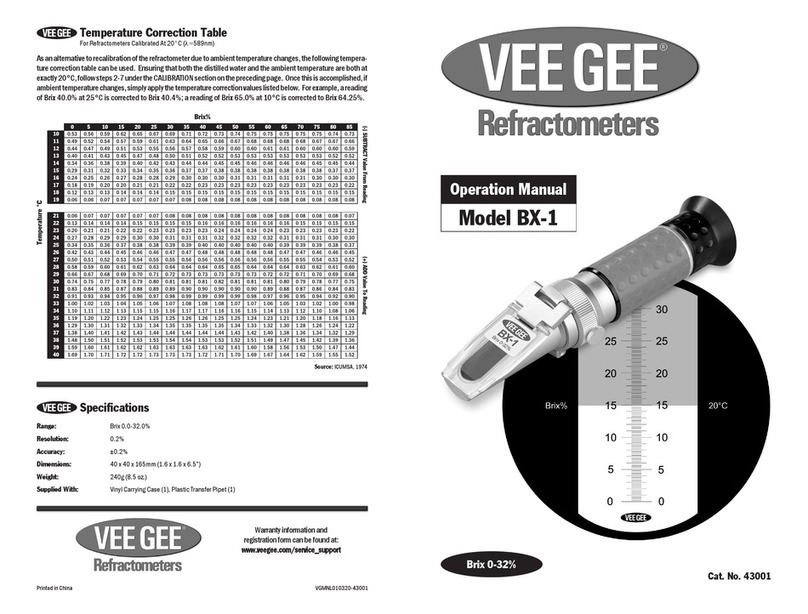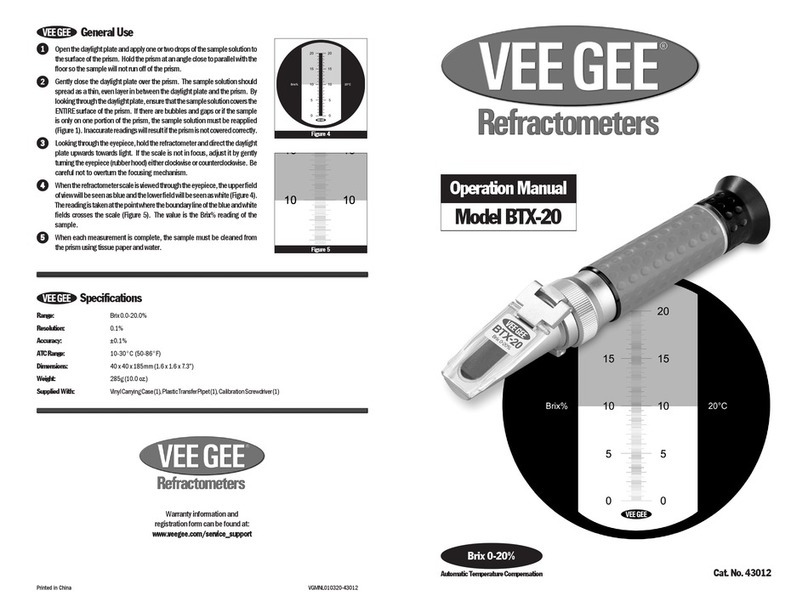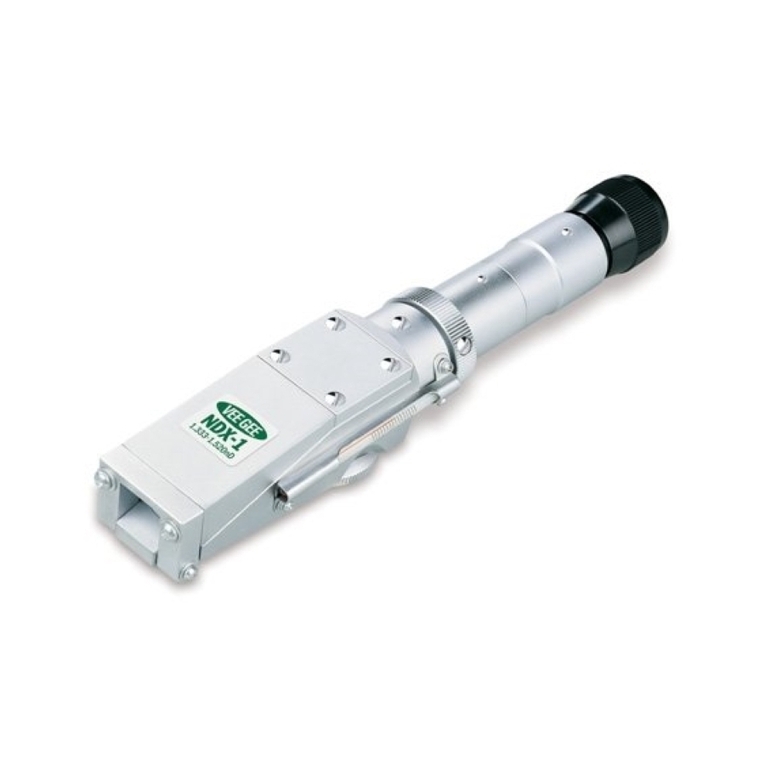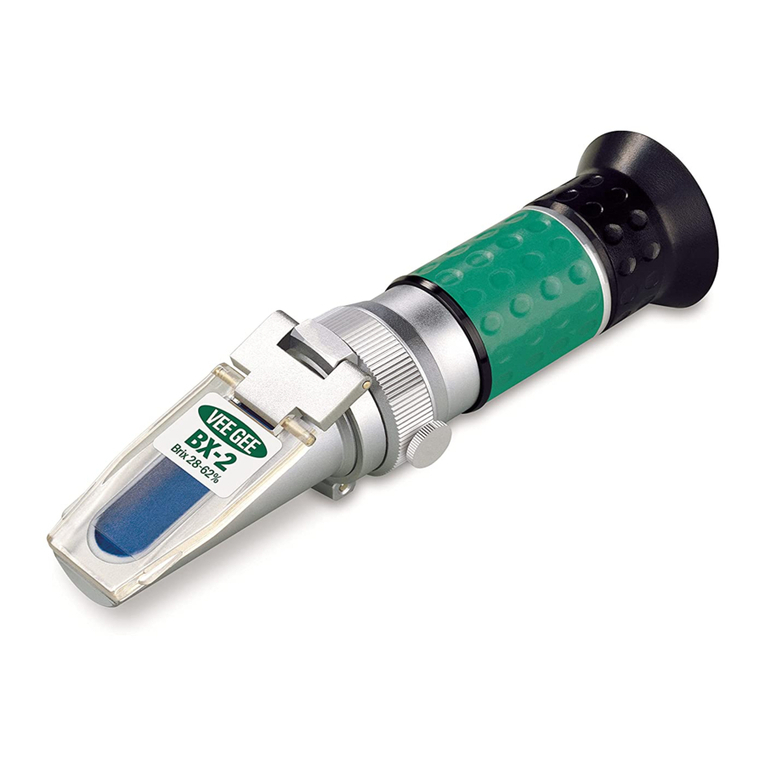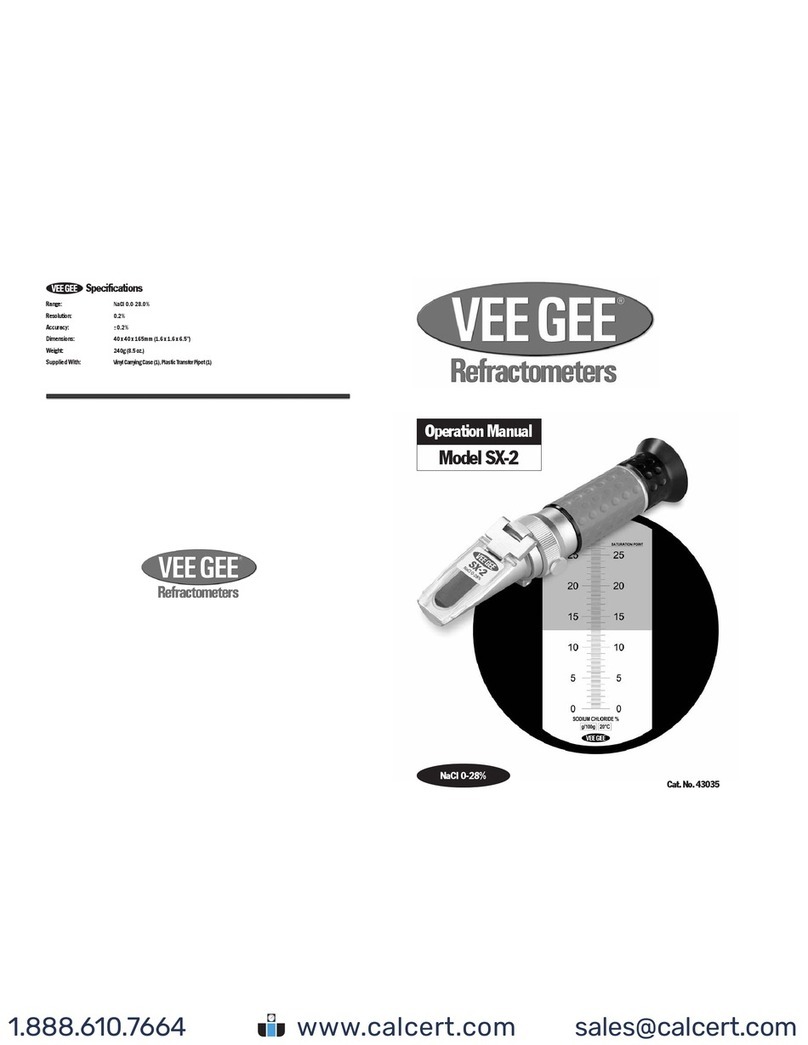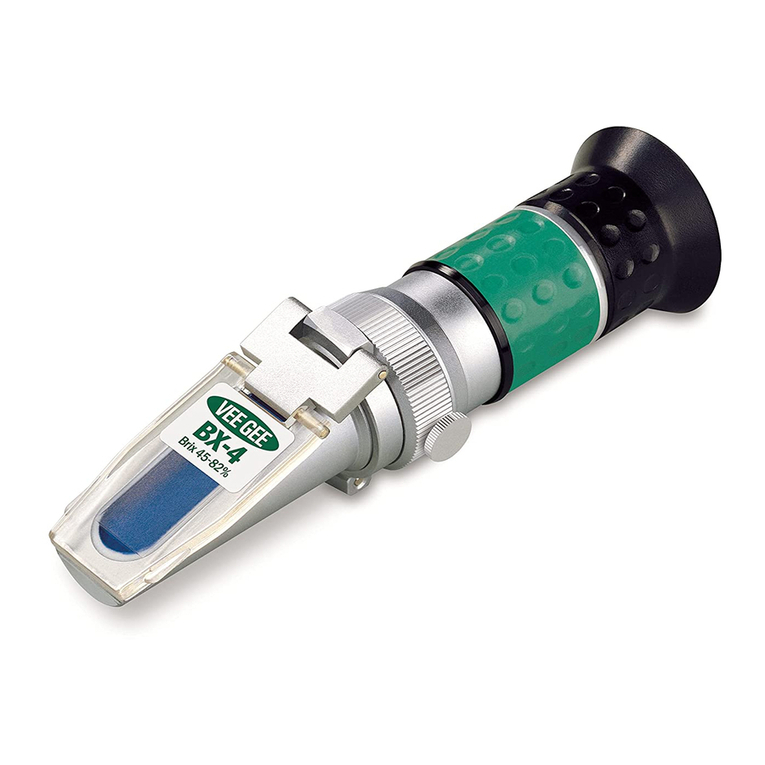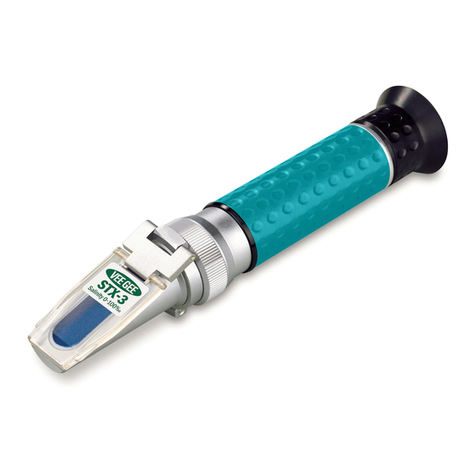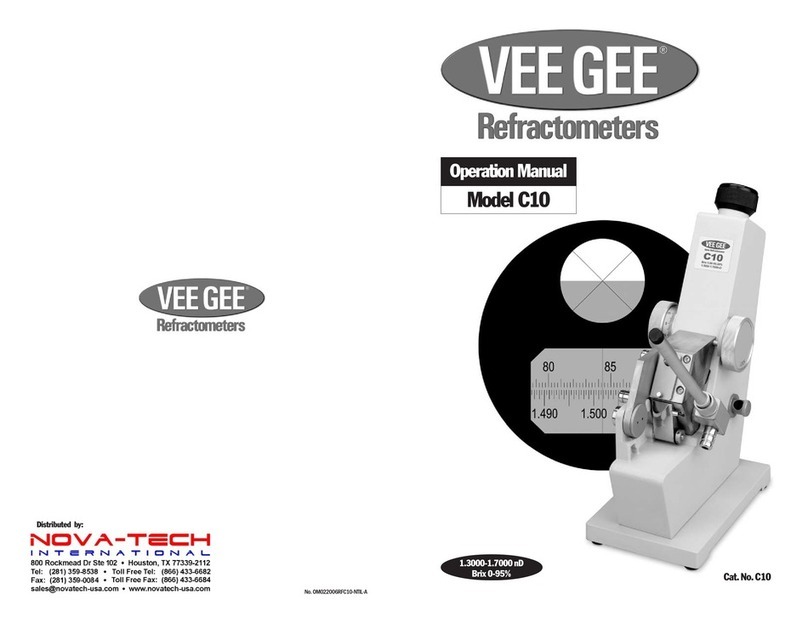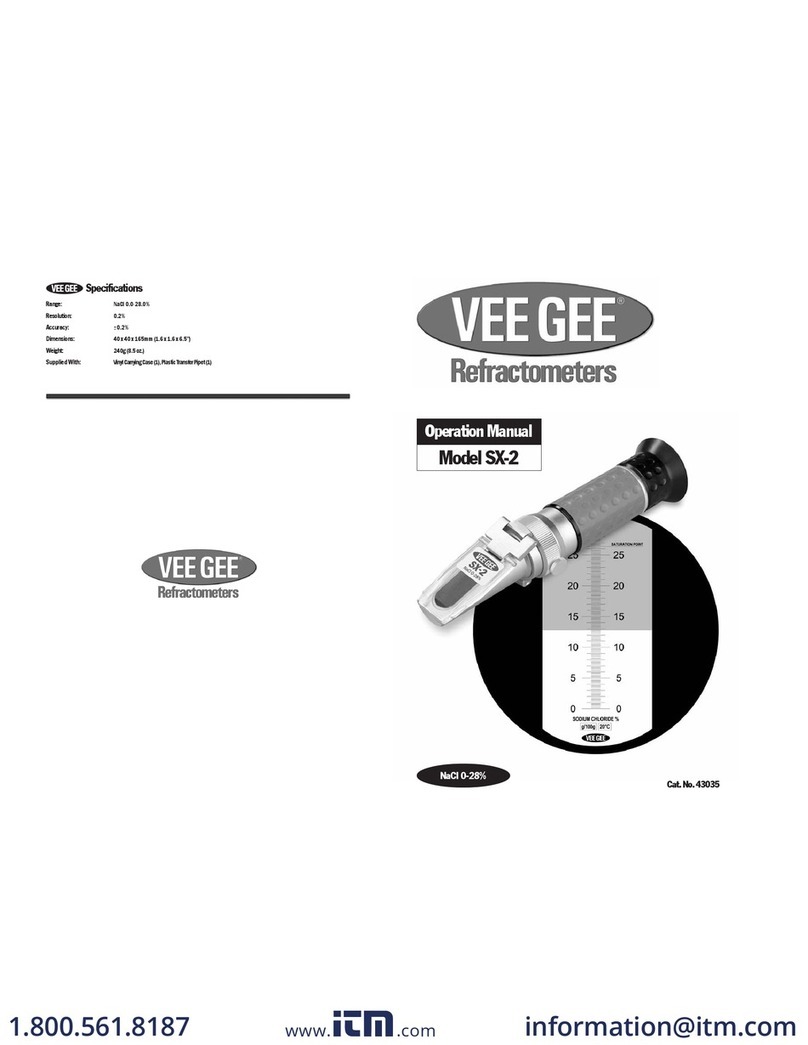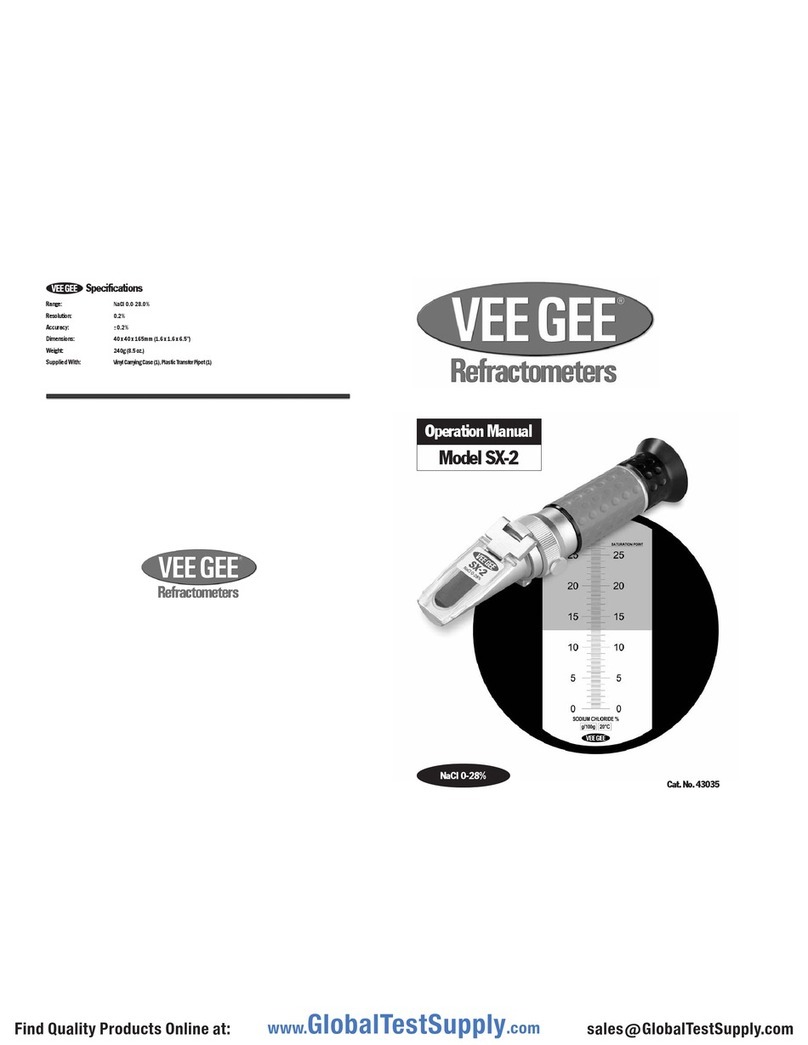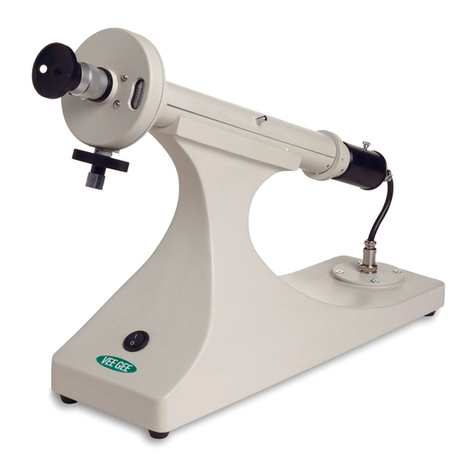
Refractometer Components
Calibration Ring
Mechanismusedtozeroorcalibratetherefractometer.
Rubber Hood
Houses and protects the focusable lens. Prevents
lightfromenteringthroughtheeyepieceduringuse.
Rubber Grip
Insulatestherefractometeragainsthand
heatforaccurateresults.
Non-Roll Stand
Protectsagainstdamagetothe instrumentwhen
setdownbetweenmeasurements.
Daylight Plate & Prism
The prism and sample are covered by the
daylightplate during readings.
This refractometer is an optical instrument -- it can become damaged if dropped or handled in a rough manner.
Theprism ismade of opticalglass andis susceptible toscratches --do notapply any roughor abrasivematerial andtake
care when cleaning the prism.
After each use, clean the prism surface and daylight plate with a soft cloth or tissue soaked in water and wipe off with
a dry cloth or tissue.
Do not hold the refractometer under a stream of water from a faucet. Do not splash it with or dip it in water.
If the surface of the prism becomes coated with an oily solution or similar, it will repel test samples and affect readings.
If this occurs, the prism should be cleaned with a weakened detergent or similar solvent.
2 3
1
2
55
55
5
44
44
4
33
33
3
Calibration
Precautions
CalibrationofATC refractometersshouldonly beconductedwhen theprevious
calibration setting has shifted and is noticeably affecting measurements.
DO NOT PERFORM CALIBRATIONS IN THE FIELD! Calibration must
take place in a controlled environment of 20°C (68°F) using distilled water
of the same temperature. It’s recommended to allow the refractometer and
the distilled water to reach temperature equilibrium with the controlled
environment before calibration takes place.
Openthe daylightplate and apply one or two dropsof distilledwater onto the
surfaceof theprism. Hold theprism at an angle closeto parallelwith thefloor
so the distilled water will not run off of the prism.
Gently close the daylight plate over the prism. The distilled water should
spread as a thin, even layer in between the daylight plate and the prism. By
looking through the daylight plate, ensure that the distilled water covers the
ENTIRE surface of the prism. If there are bubbles and gaps or if the distilled
wateris onlyon one portion of theprism, thedistilled watermust be reapplied
(Figure1). Inaccuratecalibrations willresultif the prismisnot covered correctly.
Looking through the eyepiece, hold the refractometer and direct the daylight
plate upwards towards light. If the scale is not in focus, adjust it by gently
turning the eyepiece (rubber hood) either clockwise or counterclockwise. Be
careful not to overturn the focusing mechanism.
When the refractometer scale is viewed through the eyepiece, the upper field
ofview will beseen as blueand the lower field willbe seen aswhite (Figure 2).
Confirm that the boundary line crosses the scale at “0” (Figure 3).
Ifthe boundaryline fallsaboveor belowzero,gently loosentheset screwonthe
calibration ring with the supplied screwdriver. While looking through the
eyepiece, gently turn the calibration ring clockwise or counterclockwise until
the boundary line is at zero. Once this is achieved gently tighten down the set
screw with the supplied screwdriver. (NOTE: Do not over-tighten. If the set
screw is over-tightened, the boundary line may shift slightly).
When calibration is complete, gently wipe the prism using tissue paper.
Thank you for purchasing this VEE GEE Refractometer. With the user in mind, VEE GEE Refractometers are built from modern
designs and, with proper care, this instrument should provide many years of reliable performance. It’s recommended this
manual is read entirely before using the refratometer for the first time.
Introduction
Figure 1
Figure 2
Figure 3
Figure 3
66
66
6
77
77
7
VEE GEE Model BTX-1 Refractometer is equipped with an Automatic Temperature Compensation (ATC) mechanism.
Refractometers that do not feature such a mechanism must be recalibrated (zeroed) when shifts in ambient temperature
occur, or make use of a temperature correction table. Model BTX-1 automatically compensates for ambient temperature
changes (10-30°C), so recalibration is not required.
With continued use, the calibration setting on ATC refractometers can shift over time . It’s good practice to periodically check
the refractometer by conducting a measurement of distilled water. If the reading is more than one subdivision from zero,
the refractometer should be manually calibrated. Please refer to the Calibration section below.
DO NOT PERFORM CALIBRATIONS IN THE FIELD! Calibrationmusttake place
in a controlled environment of 20°C (68°F) using distilled water of the same
temperature. It’s recommended to allow the refractometer and the distilled water to
reach temperature equilibrium with the controlled environment before calibration
takes place.
Automatic Temperature Compensation
www. .com information@itm.com1.800.561.8187
